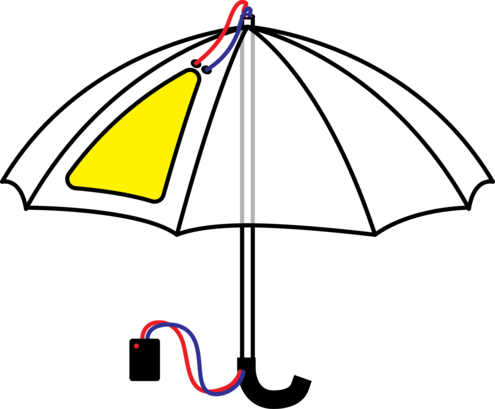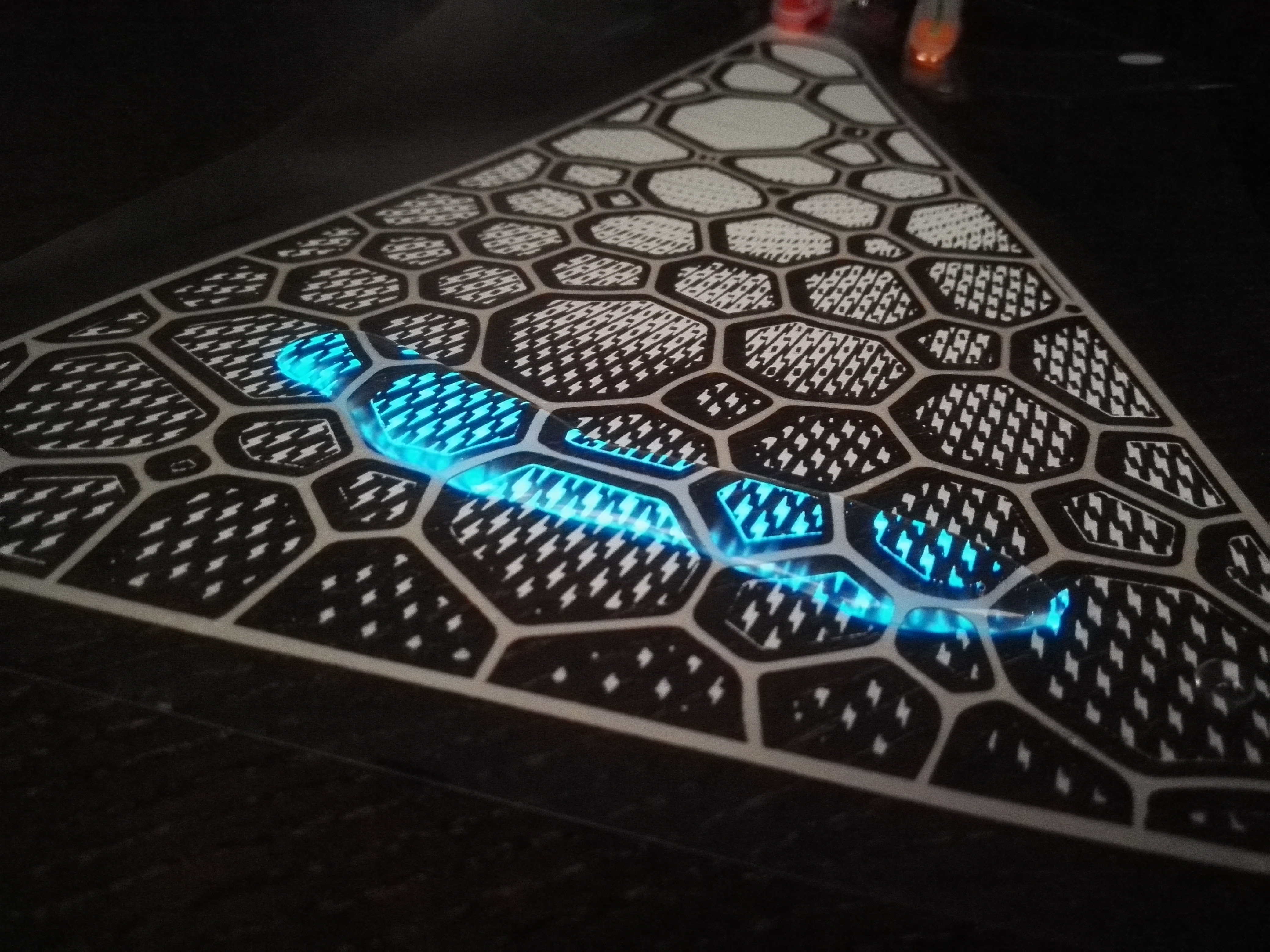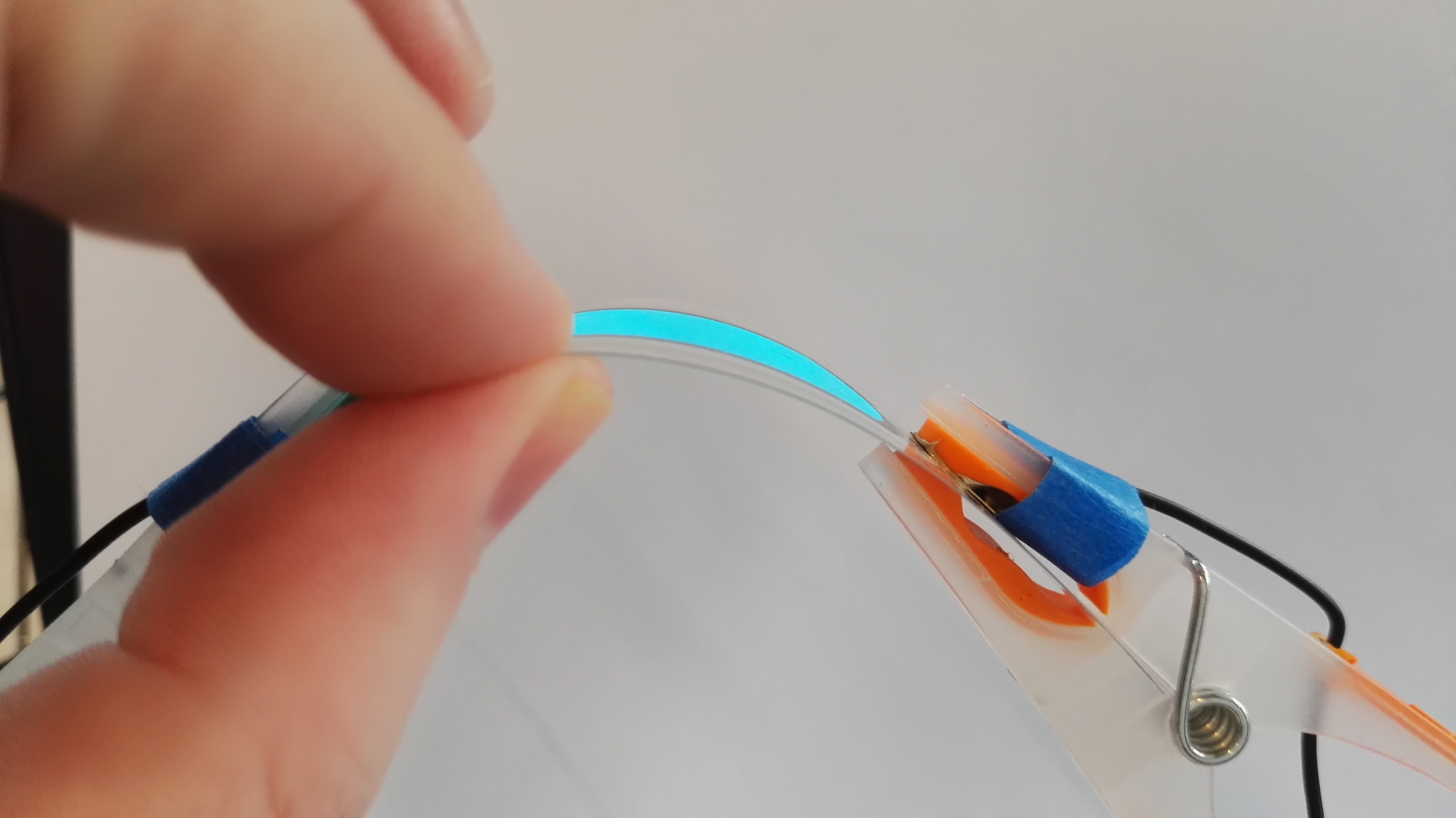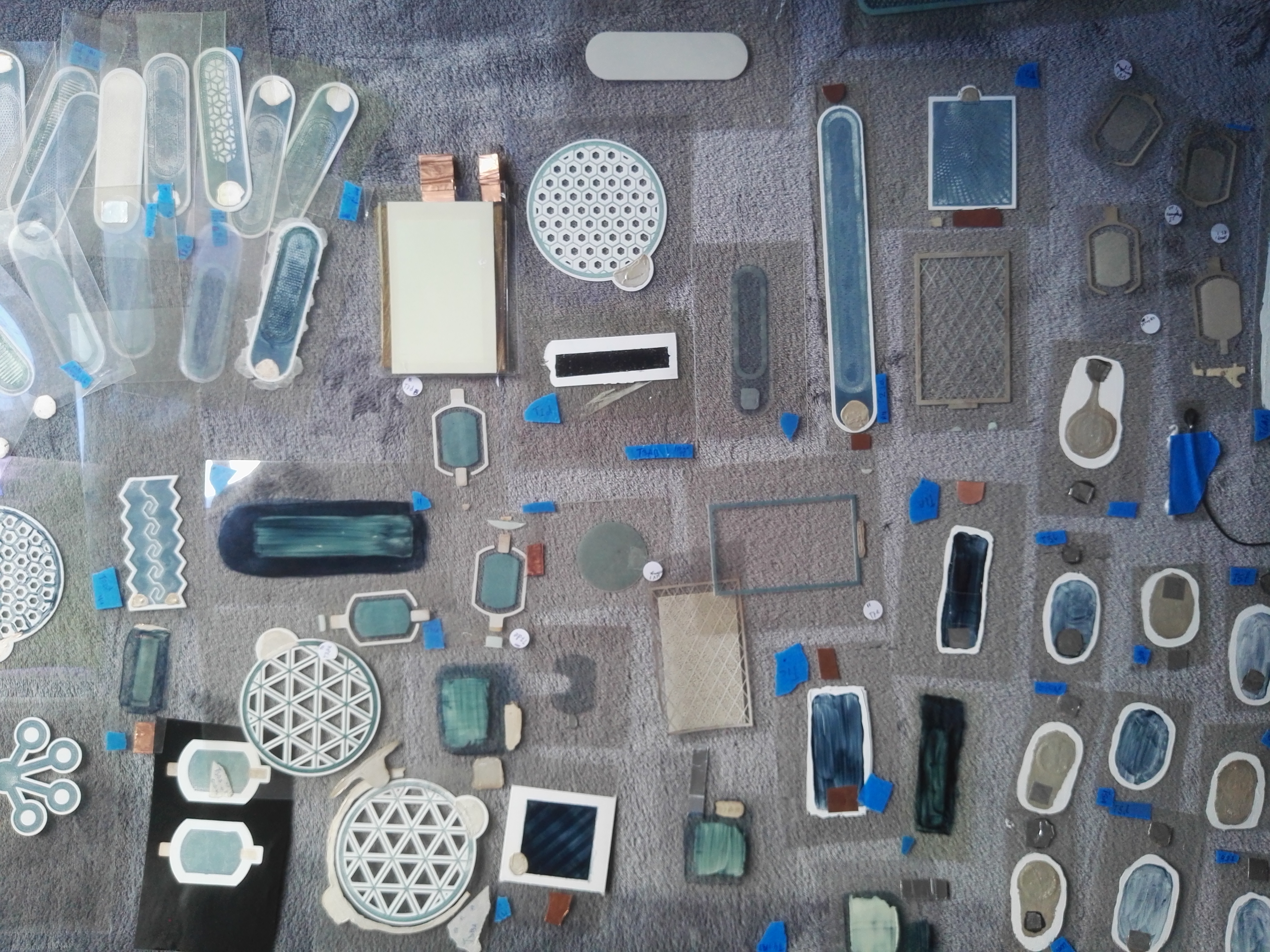The Regenlicht umbrella is a prototype for demonstrating the possibilities of electroluminescent (EL) composites as a material of design. Electroluminescent composite devices are phosphor based materials that emits light in reaction to exposure to an electric field.
The DIY approach for fabricating EL composites using screen printing (or painting) supported the understanding of the components (conductors, dielectrics and phosphors) and the composite structure. The construction of EL material leaves room for experimentation within certain parameters with for example; material choice, shape variation, phosphor color, layering sequence and relative thickness. The goal of the project is to explore the possibilities for making EL composites (semi-) transparent and integrate the findings into an experiential demonstrator.
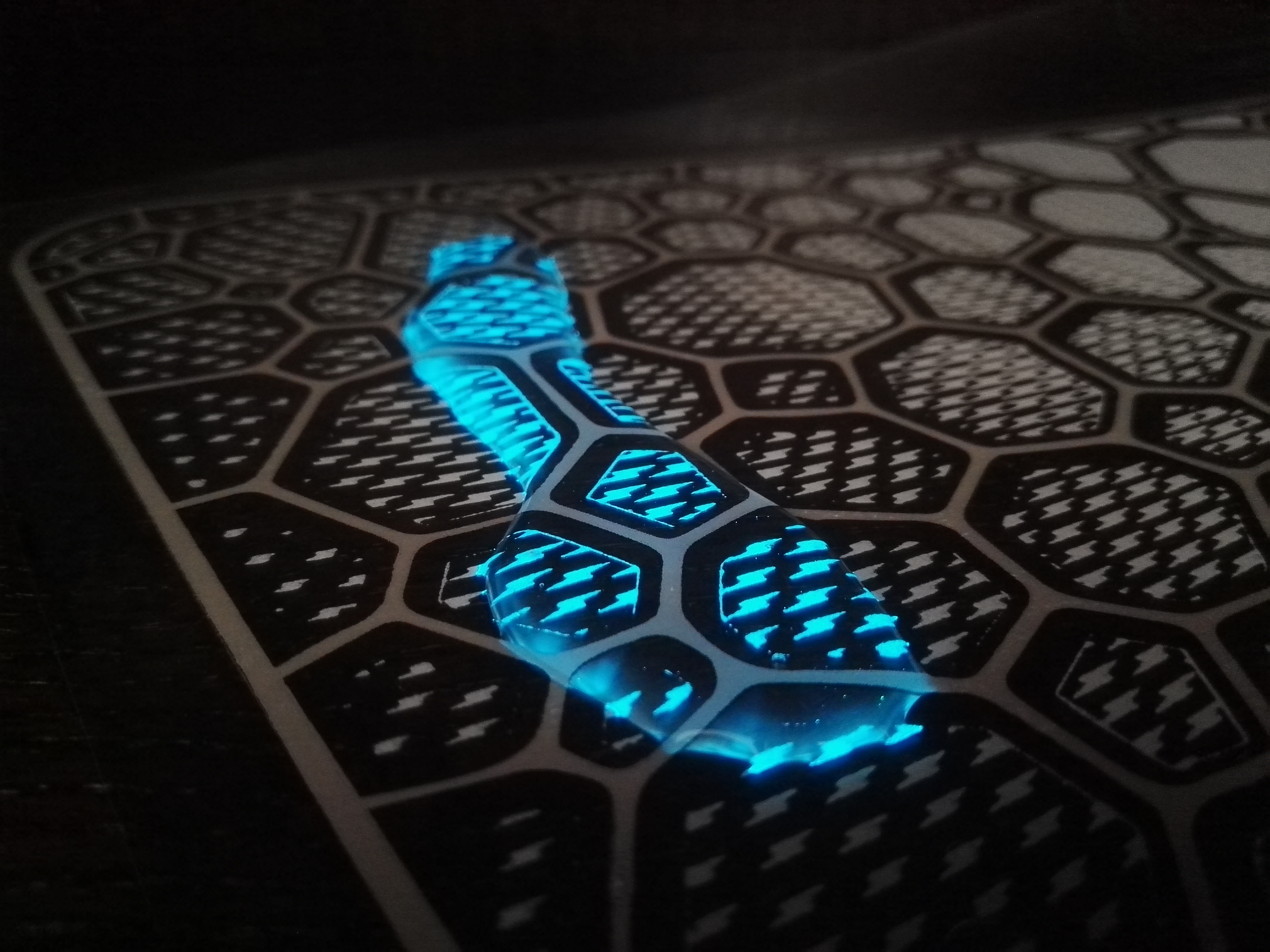
A vast variation of samples are made to see how the material characteristics and experiential qualities change in relation to certain parameters. The tinkering and experimenting with the material lead to exciting new ways of activating the light emission which has been the foundation for the Regenlicht umbrella. By depositing the conductive layer as patterns that can be bridged with water droplets, the underlying phosphor layer can light up dynamically. The light emission of these very local and dynamic droplets of water make it fun to handle the Regenlicht and stimulate unseen interactions and experiences in an otherwise dull and rainy situation.

Kaspar Jansen
- +31 (0) 152786905
- k.m.b.jansen@tudelft.nl
-
Room B-3-170
Researchers
- Prof. K.M.B. Jansen
- B. Barati, Msc.
- Stan Claus (Graduate)
Regenlicht
Prototype demo
Water droplet orange (interaction test)
Pressure sample test
Screen printed sample on ITO sheet
Wireing
